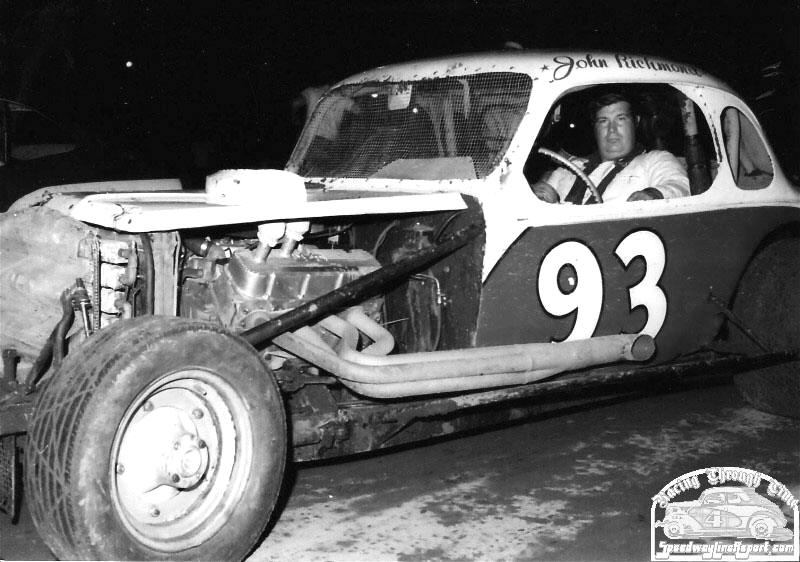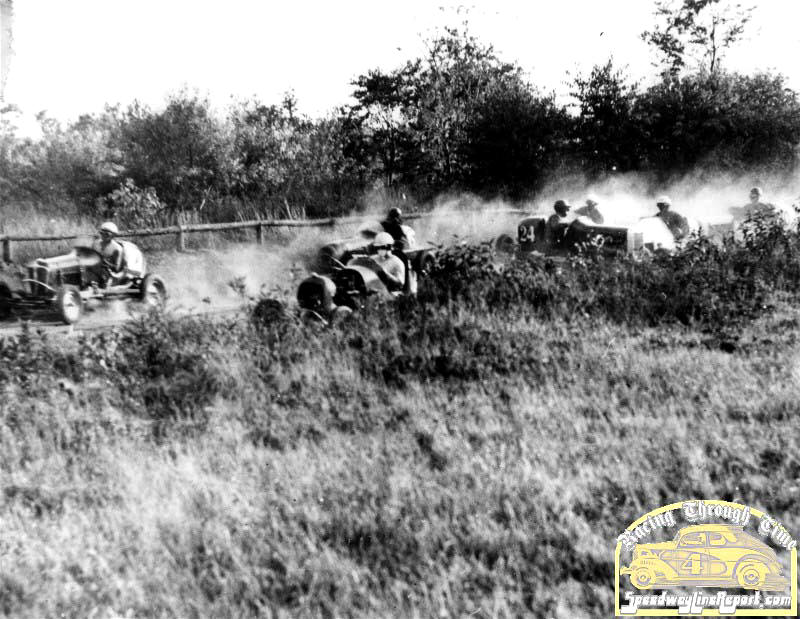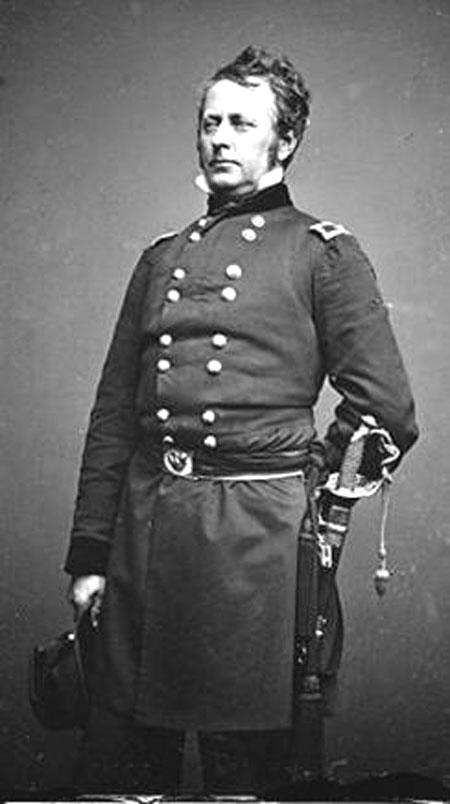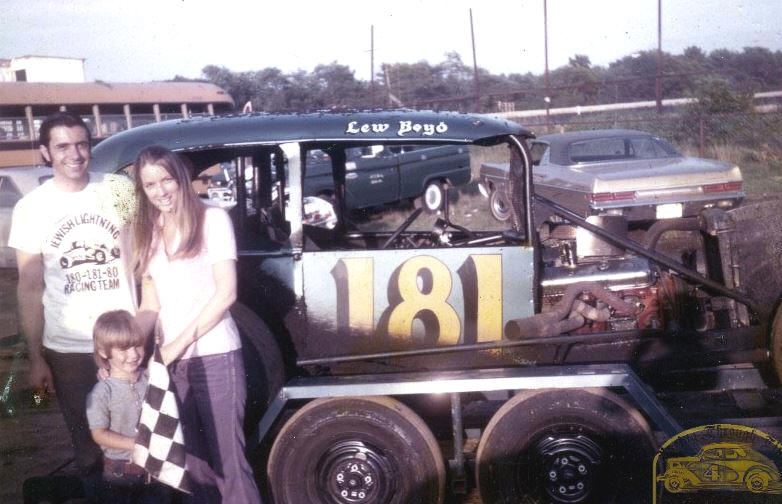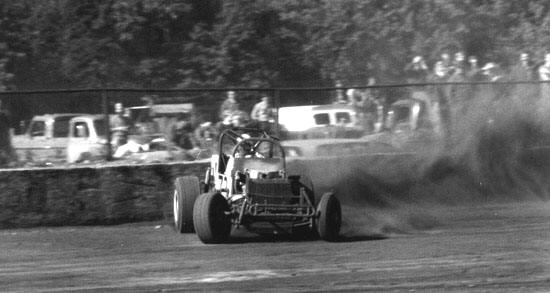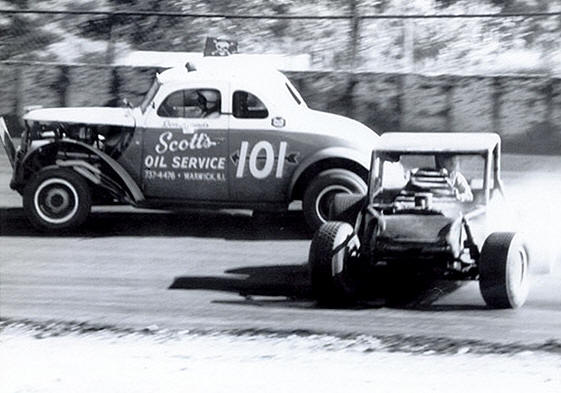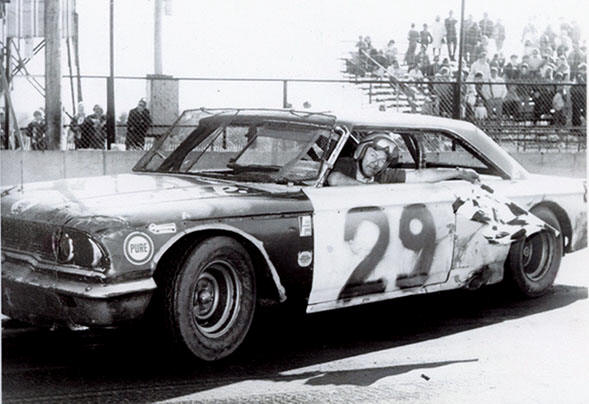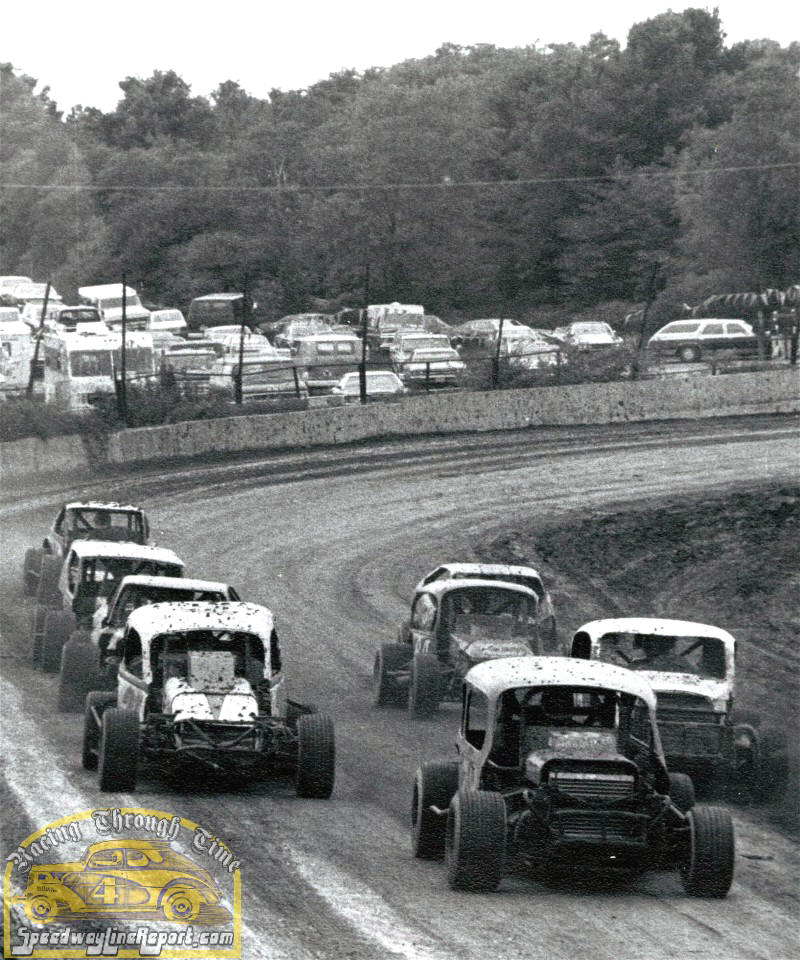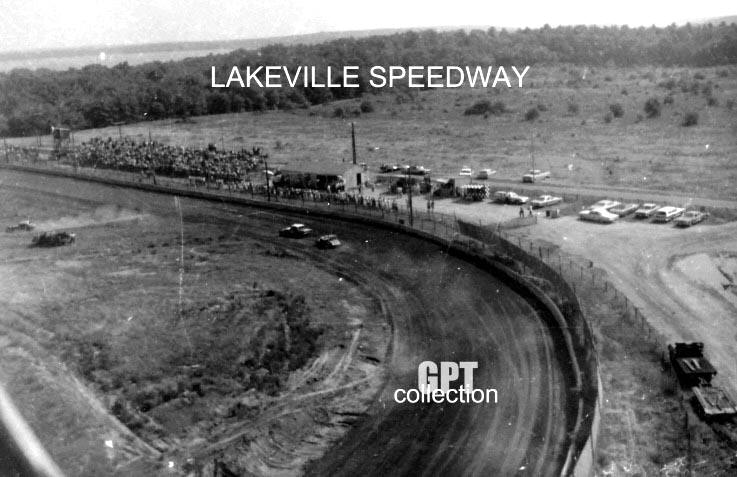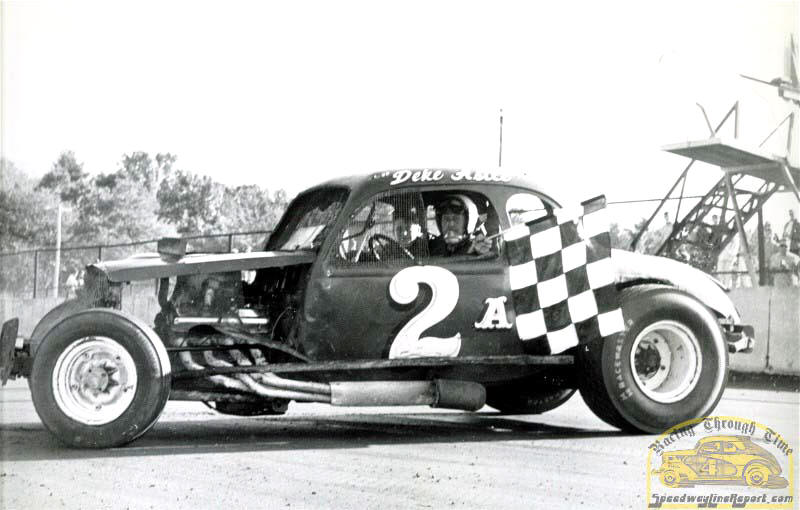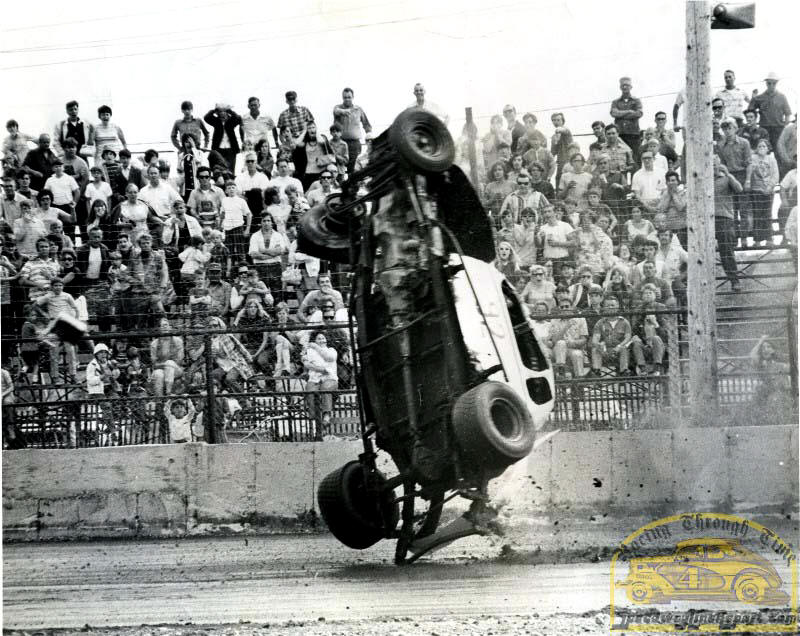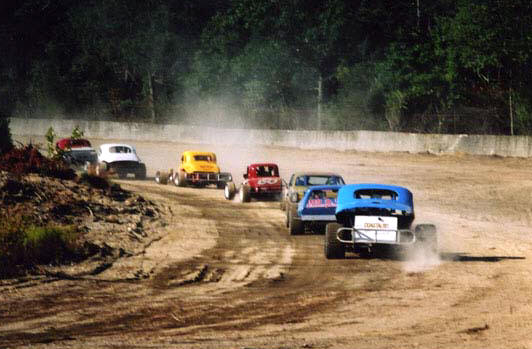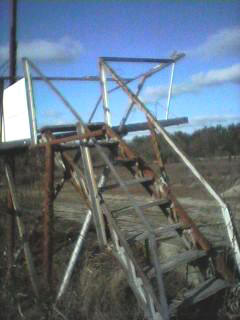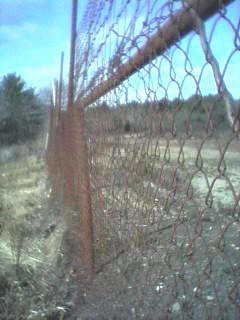|
|
Since I seem to have lost my forum, Mark
Thomas' "Racin' Paper", I will apparently enter the 21st Century and start doing
my column as a
blog. In certain times of the year, this may not be weekly; but I promise to
keep it regular. Many of the site regulars have only been able to
get my columns via this site, anyway, and representing the very newspaper that
was given out at Thunder Road gave me no press courtesies.
So, I might as well do it this way and reach some different readers. Let me know
what you think. -Bill
Week of August 6, 2012
|
|
THE STRANGE AND LOVABLE TRACK IN LAKEVILLE
This is a subject near and dear to my heart, for which I don’t have a ton of facts; so, I did the best I could to give it its due. At one time, southern New England, Massachusetts and Connecticut in particular, was loaded with race tracks. Many of these tracks went by the wayside, in the mid 1950’s, when hastily – organized ovals all over the northeast fell to financial and liability problems. Others, like Stafford, Thompson, Seekonk, and more, went on to become established and polished facilities.
From Dave Dykes’ Site
Unassuming Johnny Richmond was a sort of poster boy for the Lakeville track. He,
like the track he was loyal to, was one of the unsung parts of racing.
By the 1990’s, even many of the more established tracks in that region had been closed. Familiar sites like Norwood Arena – for example – succumbed to the thirst for revenue – generating prime real estate development and, in many cases, disappeared without a trace.
One track that did run long enough to etch its place in racing history was commonly known as Lakeville. Located on the Staples Shore Road, not far off state route 105, the track was somewhat near the town from which it borrowed its unofficial name. According to historian Dave Dykes, the location had a track from its days as the Middleborough Fairgrounds, between Middleborough and Bridgewater, Massachusetts.
Photo From Dave Dykes’ Site
The track had racing from a very early time in the twenties.
The half – mile track was begun in the 1920’s, according to Dykes. The site had been variously used as a horse training site and as a camp venue for troops under Civil War Union general Joseph “ Fightin’ Joe” Hooker. Given that the term “hookers” arguably came from prostitutes who served the general’s troops during the many lulls in military action, the site might have had a number of recreational uses before its racing years. I also thought I had read somewhere that it was a CCC location during the Depression, too.
Ladabouche Collection
Gen. Fightin’ Joe Hooker didn’t exactly live up to his name.
Most of the significant history of Lakeville Speedway came during its latter years – around the 1970’s. The bucolic nature of the place once prompted an article done in Stock Car Racing magazine – most likely written by one of three active Lakeville racers: Lew Boyd, Bruce Cohen, Dick Berggren, or one of their buddies. Then promoted by mini stock star Dan Meservey, the speedway had caught the fancy of a reading public which was accustomed to showier facilities.
Boyd Collection Photos
Lew [Finch Fenton] Boyd and family at Lakeville Speedway. Below -
In a supermodified - "trying to hurt himself", as Lew puts it.
According to that article, one of the unique and cool parts of a Lakeville experience was one of the men’s toilet facilities. You could relieve yourself and look right out, onto one of the turns on the track to take in the action. Meservey gave the dirt track his best try, but that went to no good as did everyone else’s best tries. The track just did not attract enough spectators and cars to turn a good profit [or even come close to breaking even].
The fields that the track did attract were an eclectic mixture of different cars, from different areas and venues of the sport. You could see someone like Don Rounds, of Warwick, Rhode Island, who have driven anything from his familiar blue and white #101 1937 Ford coupe to a former Grand National Ford, primered and crudely numbered #29. Peacedale, Rhode Island’s popular and easy – going Johnny Richmond was another regular fixture at Lakeville, with his #93.
Photos Courtesy of Don Rounds, Jr.
Don Rounds drove at Lakeville with both his familiar 101 from
the late 1950’s and [below] a former Grand National Ford.
The Jewish Lightning gang of Boyd [often going by the name of Finch Fenton], Cohen, and Berggren were fond of Lakeville and apt to show up with something akin to a dirt supermodified. Seekonk’s legendary Deke Astle was a regular at the Massachusetts track that was, apparently not a long tow from the tiny state of Rhode Island. According to Dykes’ references, Astle was called the “Little Man with the Big Cigar”, and was a Seekonk champion.
Adding to the peculiar mix on the track was a bunch from well up into New York. Dick Hansen, one of the best drivers to ever run at the Pine Bowl Speedway outside of Troy, New York, ran at the track as did Mert “Socks” Hulbert, at that time running Bruce Carmen’s potent #23’s, with which he usually performed at Midstate, in Morris, New York.
Photo From Dave Dykes Site
This photo shows the versions of modifieds running Lakeville at
the time the track is best known. They were probably not on the cutting edge.
Lakeville was in that era when the coupes were still running competitively and the later model bodies like Mustangs, Falcons, Corvairs, and Vegas were coming in. The track was one of the first tracks, along with Plainville Stadium in Connecticut, to run mufflers on the cars. Today, most of the tracks are requiring these on most of the divisions. The track’s dust problem was dealt with, as was the case in several other locations with a mixture of used motor oil and water.
Photo Courtesy of G P Tavares
This shot supplied by Glen Tavares shows the small stands, the close proximity to
Staples Shore Road, and the oiled track surface. Below - Deke Astle, one of the
Lakeville beloved, in his dirt modified.
Photo From Dave Dykes Site
The crowds, whatever size they might be, were enthusiastic and involved in the program. The track, which also went by the names Golden Spur Speedway and Camp Joe Hooker Speedway, offered a program for a very reasonable admission rate, which allowed families that otherwise could not afford racing, to attend. Dave Dykes put it aptly when he described a photo of Gomer Taylor, in mid – wreck, at Lakeville:
“This shot of Bruce “Gomer” Taylor taking a nasty spill must have made every trade paper in New England (including the cover of a Cavalcade of Auto Racing Pictorial), when it occurred back in the early 1970’s. Lakeville was a no-holds-barred fun place to race, but like all tracks, it could be treacherous at-times as this photo clearly illustrates. One of the things that always intrigued me about this shot is the varied expressions on the faces of the crowd. Some react in sheer panic, some are plain-horrified, and a few even manage a smile. Taylor by the way escaped serious harm in this episode to become one of the top racers in the region during later years.”
Photo from Dave Dykes’ Site
Bruce “Gomer” Taylor, another of the Lakeville beloved, doing his best to entertain the crowd.
The woman to the Immediate left of the power pole has had time to react.
We get to hear a lot about the Beech Ridges, the Catamount Stadiums, the Claremont [Twin State] track, Oxford Plains, Lebanon Valley, and all of the other well – documented ovals that made up the history of stock racing in this area. But there were also dozens of Lakevilles, Otter Creek Speedways, Ellsworth Speedways, North Ridges, and other places where things just did not work out the way their operators intended. But, particularly in Lakeville’s case, the contributions may not have made the top scale among the more fashionable and chic of racing followers; but, to the scruffy stock car rat with his stained T – shirt, the pack of Marlboro’s rolled up in one sleeve, with a threadbare silky racing jacket that was ten years old, and that weariness brought on from attending his third race track in as many nights, Lakeville was pretty close to the soul of the sport.
Such was the reverence and devotion that its attendees had to the place, that Lakeville is one of the few places [along with Northeastern Speedway in Vermont and Arundel Speedway in Maine] where some of its admirers put in sweat and funds to temporarily raise it from the dead to host a reunion meet on its grounds. With or without the blessing of some of its neighbors, former racers brought restored stock cars to a hastily cleaned – off Lakeville surface to roar and rumble around the oval for a few nostalgic [and slow] laps.
Photo from Google Earth
The Lakeville site, as it is today. Below - A photo of the Lake reunion held in 2007.
Photo from Lew Boyd
The remnants of the track sit behind what is now the Lakeville Lions’ Club and have such neighbors as Bay State Integrated Tech and a business or residence simply called Mary E. Carr. It is a little easier to see the location after that reunion cleared the oval off, but there is no possibility that anyone will ever get it open again for racing. Only the little track near Rumney, New Hampshire seems to be able to rise from the dead every so often. Lakeville Speedway is the kind of place we must never allow to disappear from our history and our memories. A special thanks to Dave Dykes, whose comments and photo captions helped with this subject, of which I knew little. Apologies to those folks who know Lakeville with more detail and accuracy; I just felt it merited a little attention in this column.
Photos by Scott Kazan
Scott Kazan took a series of photos from the old Lakeville site, including
this one, of the starter’s stand and [below] the backstretch catch fence.
Please email me at wladabou@comcast.net if you have any photos to lend me or information and corrections I could benefit from. Please do not submit anything you are not willing to allow me to use on my website - and thanks. For those who still don’t like computers - my regular address is: Bill Ladabouche, 23 York Street, Swanton, Vermont 05488.AS ALWAYS, DON’T FORGET TO CHECK OUT MY WEBSITE: www.catamountstadium.com
Return to the Main Page
Return to the Main News Page
Return to the All Links Page
Return to the Weekly Blog Links Page
